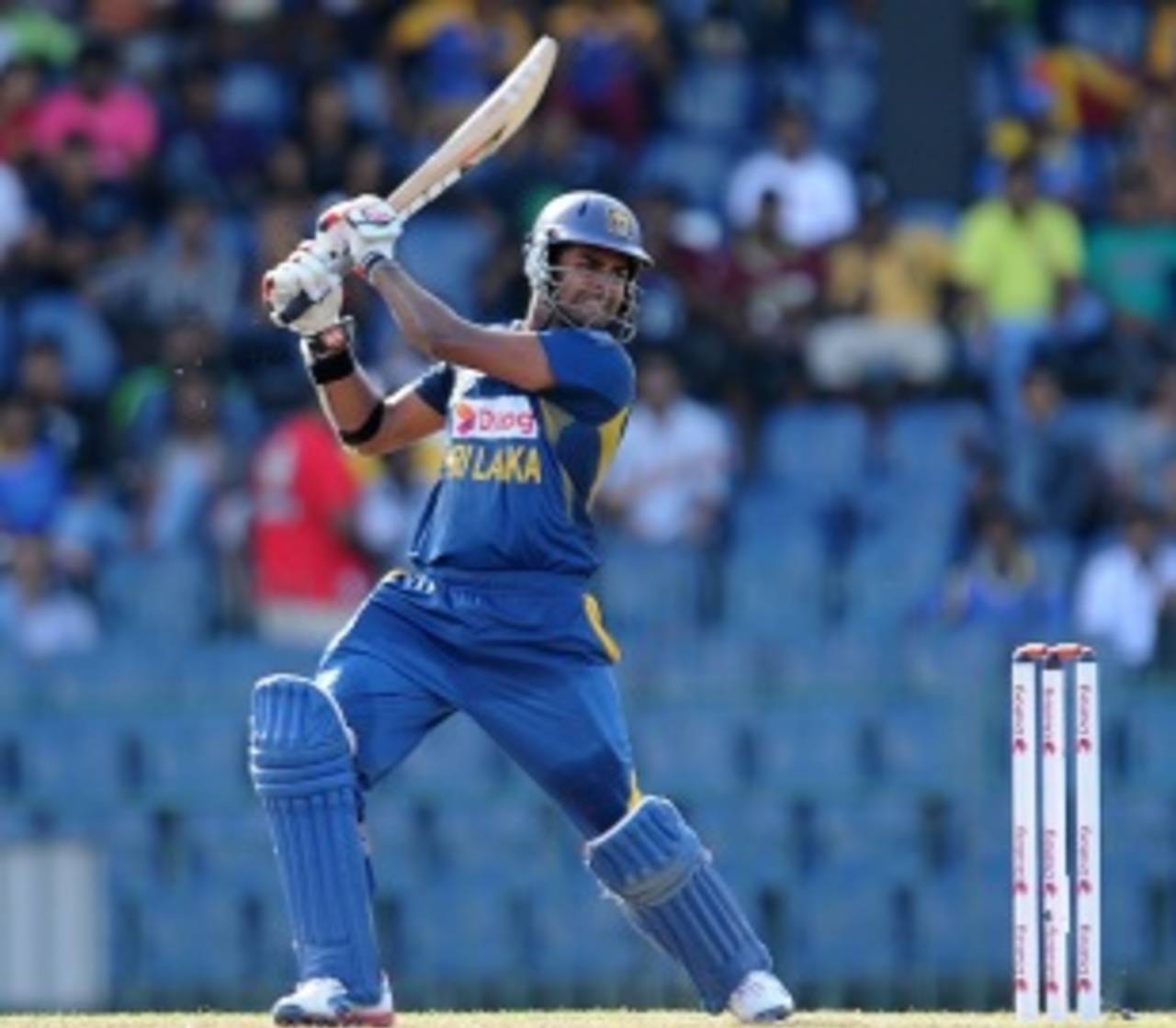As
Lahiru Thirimanne ambled to 17 from 33 balls in the first ODI of the series, his idol bestrode the other crease. Thirimanne had watched Kumar Sangakkara so closely in his teenage years, there is little to pick between the pair's cover drives, save for the disdainful air Sangakkara has acquired over a decade of mastery. Not even as ardent a disciple as Thirimanne, though, might have guessed at Sangakkara's capacity for such relentless evisceration as he unleashed that day. At the time, some remarked on how far Thirimanne had to travel before he lost his
Padawan braid, but later, Sangakkara would call that innings the best in his one-day career. It is a daunting yardstick for any player to be measured by.
Since Angelo Mathews was handed the reins in February, Sri Lanka's quest for regeneration has grown from earnest to rabid, and no one has felt its intensity more than Thirimanne. Dinesh Chandimal has, at least, played the kind of Test innings that have seen him become earmarked as a special talent, and a string of low ODI scores were considered with relative kindness. Meanwhile, calls to leave Thirimanne out for a batsman with a bigger appetite for attack mounted at home, growing to a din after that 17.
It is unlikely Thirimanne has muzzled his doubters with his 68 in the fifth ODI, because it is the kind of innings he has played before. There was little pressure perhaps, aside from the personal burden to justify his place in the team. The series had been won and Tillakaratne Dilshan was batting at the other end, fresh from his Pallekele ton. Relative to Sri Lanka's total, Thirimanne's runs also seem to have come at a plodding pace - at a strike rate of just over 73. The 53 dot balls he saw out did not suggest an abundance of fluency.
Yet it was an innings founded on composure and spurred by calculation. The early demise of a Sri Lankan opener has been the norm in this series, but embracing a new team philosophy of care early in the innings - an approach adopted even by as militant a batsman as Tillakaratne Dilshan - Thirimanne blunted probing first spells from South Africa's quicks and set about at a considered pace of accumulation. The match situation required little more. South Africa had already wilted once in the Colombo sun during the series, and Sri Lanka's innings have rarely failed to climax at the close.
A sharp straight drive to welcome Ryan McLaren to the attack and a breezy blow through the covers off Morne Morkel provided glimpses of a visceral batting talent, but Thirimanne's remaining boundaries were borne of contrivance. The slog-swept six off JP Duminy came after two watchful dot balls, and a glance to the leg side with which he reckoned on his chances of success. The lofted four off Aaron Phangiso was no less planned, neither was the chipped shot off McLaren in the 30th over. Thought wedded to execution should be the hallmark of any good No. 3 batsman and, having moved to his favourite position for the first time in the series, Thirimanne underscored his long-term potential there. This year, he has already hit a one-day hundred at first drop, where he averages 53.6.
Thirimanne and Chandimal face the dual challenge of making the considerable leap from Sri Lanka's domestic standard to the demands of international cricket, while also batting at unfamiliar positions to which their games are ill suited. Part of the reason why no Sri Lanka batsman has ever retired with an ODI average exceeding 40 is due to the fact that they have had to routinely launch their international careers in the lower order, as seniors have risen to acclaim in the places above them. Sangakkara averaged almost seven fewer runs than Thirimanne after the same number of innings.
"I think as a 24 -year-old, Lahiru is batting a lot better than I did when I was 24," Sangakkara said. "He's got a lot of time and he's a guy who understands situations very well. He also has a lot of shots that he's unafraid to execute. Lahiru is going to be one of those batsmen who is going to be one of those fantastic, run-scoring batsmen who you can rely upon in any situation to score runs for the side.
"I've watched him with a lot of pleasure. His work ethic is fantastic and his ability is there for everyone to see. He has batted in some difficult situations and never shirks his responsibility. He just needs a lot of confidence and a strong dressing room to support him when he does make sacrifices for the side."
Sri Lanka's approaching batting crisis has been billed as imminent for a year now, yet the seniors continue their plunder as freely as ever. Sangakkara and Dilshan were last year's top run-scorers in ODIs, and they are first and third respectively so far in 2013. Mahela Jayawardene has been less consistent but, as he showed in June's Champions Trophy, he continues to be Sri Lanka's best bet on big occasions.
Sri Lanka's ODI focus is now firmly on the 2015 World Cup, and though twenty months may dull the splendor of the old guard, it may give enough time for the young players to rise. Sangakkara, Jayawardene and Dilshan did not tear attacks apart in utero, and perhaps for players like Thirimanne, the promise of innings like his 68 is good enough for now.
Andrew Fidel Fernando is ESPNcricinfo's Sri Lanka correspondent. He tweets here
